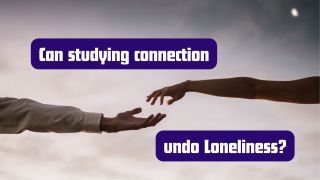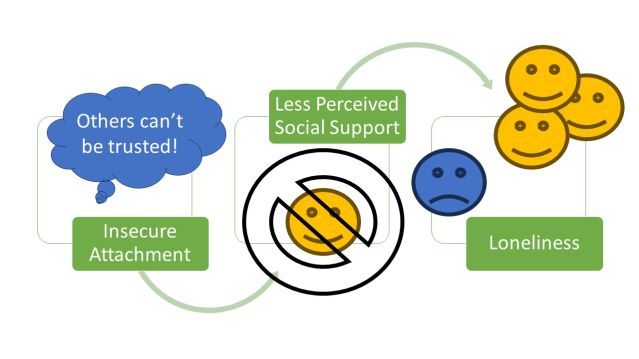
[ad_1]

Loneliness has critical destructive results on well being and well-being.
Supply: Taryn Elliot/Pexels
We’re in the midst of a loneliness epidemic. In 2023, the U.S. surgeon normal launched a report titled “Our Epidemic of Loneliness and Isolation,” which described the intense well being dangers related to being lonely. Lonely persons are at considerably elevated danger of growing coronary heart illness, of getting a stroke, and of growing dementia. It’s even linked to having a shorter lifespan.
So what will we do about loneliness? The surgeon normal makes broad coverage suggestions, akin to rising the variety of locations the place folks can join and socialize (e.g., public parks, libraries), creating “pro-connection” insurance policies like making public transportation simpler to entry and paid household depart extra obtainable, and re-evaluating {our relationships} to social media. At a person, psychological degree, I’ve been considering extra deeply currently about one other facet of our reference to others: our attachment types.
Analysis on attachment grew out of pioneering analysis by John Bowlby and Mary Ainsworth, who have been finding out the best way that kids relate to caregivers. They researched the best way that infants bond with their major caregivers (usually, however not all the time, their moms), discovering that the infants had alternative ways of interacting with them.
Mary Ainsworth launched the “unusual conditions” job to see how infants would react to being reunited with their caregiver after a time frame aside. When an toddler would see their caregiver once more, some would rush over with pleasure, be comforted, after which return to taking part in. Some would rush over, however stay anxious and preoccupied with the caregiver, seeming to wish to make it possible for the caregiver wouldn’t depart once more. Others would appear to not care when the caregiver returned. They’d ignore them, seeming to speak “I don’t care that you simply left.”
These reactions to being aside from a caregiver—who would even be referred to as an “attachment determine”—urged totally different underlying types of relating. Some infants appeared to be anxiously connected, worrying quite a bit about whether or not a dad or mum could be there once they have been wanted. They’d attempt to keep shut, checking continually for indicators of affection, approval, and availability. Different infants appeared to be avoidantly connected, disconnecting themselves from the necessity for care. They appeared to speak that if the dad or mum wasn’t all the time round for them, then they only wouldn’t put an excessive amount of effort into caring concerning the dad or mum.
Flash ahead to the Nineteen Eighties, and psychologists begin to analysis how these early childhood attachment types is likely to be linked to how adults relate to one another. Possibly, they suppose, we be taught “psychological fashions” or patterns about the way to relate to one another in these early shut relationships that we supply ahead into maturity. Possibly, for instance, somebody who learns to be troubled about getting sufficient care as an toddler carries ahead some nervousness about getting sufficient care and consideration from their boyfriend or spouse.
In the previous couple of a long time, there was tons of progress in our scientific understanding of grownup attachment. This analysis means that, by and enormous, the sorts of attachment types that Bowlby and Ainsworth studied in infants additionally exist in adults, and related dynamics play out in grownup romantic relationships. Some persons are anxious about being deserted and will be perceived as “clingy” by companions. Some folks appear to reject closeness and relying on others, and will be perceived as “aloof” by companions. Some folks have each these traits, and each really feel deeply anxious about being deserted but additionally unable to open up and depend upon others. These are typically described as “anxious-avoidant” folks as a result of they’ve each the anxious and the avoidant type of regarding others.
So how does all this relate again to loneliness? Properly, if folks on the whole appear to be having a tough time connecting with one another, how would possibly this be linked to how folks relate to one another? Specifically, are we having a troublesome time creating robust bonds with shut others in our lives—like romantic companions and finest buddies—due to the best way we take into consideration {our relationships} with them? Attachment type is (in all probability) probably the most deeply developed and best-studied manner of understanding how we join with shut others. So does the literature on attachment have one thing to say about loneliness?
It seems, there’s an often-overlooked however insightful literature on the connection between attachment and loneliness. The brief reply is that there’s a hyperlink. Listed here are some key findings:
- Securely connected folks (not anxious, not avoidant) are inclined to report much less loneliness general.
- Anxiously connected folks are inclined to report extra loneliness, particularly in relationships with household and buddies.
- Avoidantly connected folks are inclined to report extra loneliness, particularly in relationships with household and romantic companions.
- Anxious-avoidant folks are inclined to report extra loneliness, particularly in shut friendships.
Loneliness Important Reads
The researchers additionally discovered that perceived social assist appeared to clarify a giant a part of this hyperlink. Perceived social assist is an individual’s notion that another person could be there to assist them in the event that they reached out. Right here’s the best way they thought it might work:
- Individuals see others as destructive or unreliable (they don’t seem to be securely connected).
- That inside mannequin of others (the insecure attachment) makes folks suppose others received’t be prepared or capable of present social assist when it’s wanted.
- That notion that others received’t present social assist makes folks really feel lonely, particularly in relationships with family and friends.

Analysis suggests this course of might hyperlink attachment to loneliness.
Created by A. Danvers
Many of those correlations have a reasonable to giant dimension, suggesting that this will clarify a considerable piece of the loneliness puzzle. In different phrases, loneliness might have a deeper root in how we have a tendency to connect to different folks. This attachment, in flip, is said to patterns of interplay discovered and strengthened all through an individual’s life.
In future posts, I’ll hold exploring this relationship, together with concepts for the way to develop stronger, safer attachments. Within the meantime, you might discover the e book Connected by Amir Levine and Rachel Heller an excellent useful resource for beginning to find out about grownup attachment types. Keep tuned.
[ad_2]